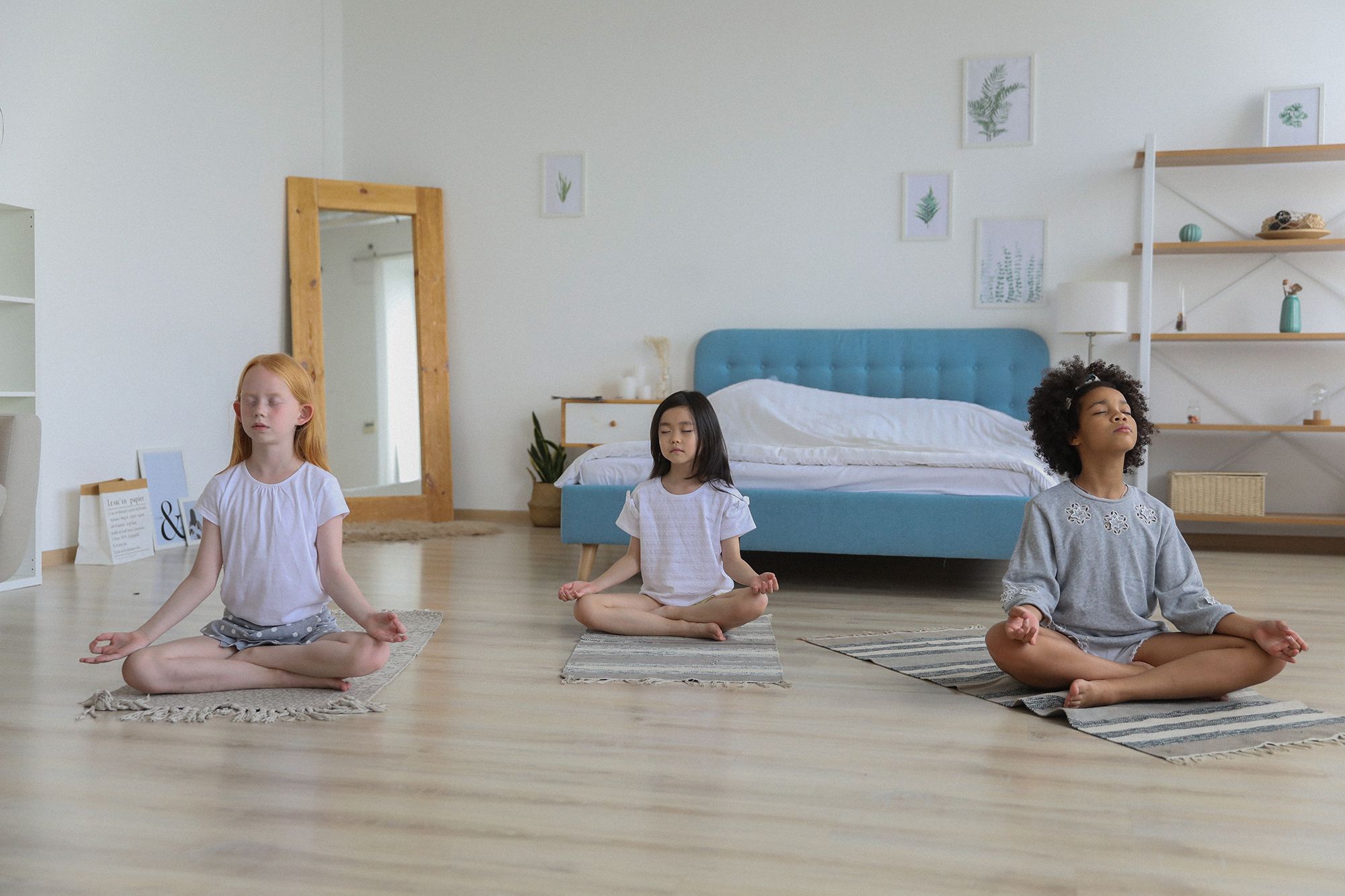Mindfulness, kids, and parents - An introduction to meditation for children
Jul 16, 2021 — George Longovitis
“Our children are our greatest treasure. They are our future.”
Nelson Mandela
We want children to be happy, healthy, and live the best of their lives. After all, they are humanity’s treasure.
Our world is constantly evolving, every day things seem to go faster than in the previous one. We frequently make lots of decisions. We process numerous pieces of information. Yet, we can learn to handle stress and possible burnout in this continuously changing environment through leading more content and meaningful lives. Meditation can be a key contributor to this improved way of living.
When our minds are clear, we tend not to overreact to various situations. Through mindfulness, we allow ourselves to take a step back and assess our thoughts and feelings in the present moment.
Studies show that mindfulness exercises in the educational environment can help students develop their cognitive, emotional, and social abilities.
If you are interested in more specific information about education and mindfulness, you can check out Dominic’s great article.
Apart from in the classroom, children can benefit from meditation in various other areas:
1. Mental focus
No matter the place, activity, or situation, young people can learn to stay in the present moment.
Everyone can learn something from anything and anyone. As children and teenagers are constantly building their mindset and perception, staying focused will also allow them to learn more and in much greater depth.
2. Development and enforcement of coping mechanisms
As soon as children start exploring our world, uncomfortable situations will occur. As we all know, the growing period can be a very anxious time.
The Navy SEALs have this motto:
“Under pressure, you don’t rise to the occasion, you sink to the level of your training.”
Meditation can be the type of training that allows kids and teenagers to ground themselves in their center, relax, breathe, and then assess any challenges they face.
In the long term, this can lead to confident and peaceful, fully functioning adults. As the Dalai Lama once said, “If every eight-year-old in the world is taught meditation, we will eliminate violence from the world within one generation.”
3. Boost healthy habits
Studies have shown that through meditation practice, your sleep pattern improves. Sleep is an essential process for adults but is even more vital to young ones, as during sleep the whole body is building and strengthening itself .
Studies have also shown that poor sleep patterns in children can lead to high blood pressure, obesity, and even the first stages of depression.
4. Adding to the above benefits, children’s meditation can contribute to the family’s overall wellness through a virtuous cycle.
This means that the wellbeing of children can inspire the family to improve the overall health and harmony of the home, which will circle back to the child’s improved wellbeing, and so on.
But first, parents need to apply the “Oxygen Mask Rule.
In the case of an emergency, parents must place the oxygen mask on themselves before trying to help their children or anyone else. Maybe this sounds absurd to some, but tactically speaking, you are not an asset anymore if you become a liability.
In our case, though we are not in any danger, it is important to first learn the qualities and mentalities we intend to hand on to our children, like most learning, parents need to first discover, understand, and apply them for themselves..
Here are some of these qualities:
4a. Listen actively to anything.
Active listening may seem like a weird phrase. However, there are times when you will find yourself hearing and not actually listening to what happens in the present moment. With this attitude, you don’t pay any attention to the other’s message, needs, and problems, resulting in self-isolating into a cold and poor personal space.
Also, as there are always some communication gaps between parents and children, embracing the unknown and catching up on the point, can help bridge these gaps.
4b. Enjoy even the smallest things.
Interactions and planned events sometimes go well, and sometimes they don’t. Practicing gratitude for something nice ( e.g. a breathtaking sunset, a simple meal, a friendly chat with someone) will inspire your family to follow this appreciative mentality.
4c. Joy.
Maybe there is no specific road to happiness, or there is a different way for each one of us. However, there are several factors that can be developed through our mindfulness practice that can help us feel more joy, such as:
- Open attitude
- Gratitude
- Staying in the present moment
- Understanding our experiences
- Self-awareness increase
- Imagination and creativity boost
4d. The noble king in the room.
When parents refuse to accommodate their children’s desires, they appear to be acting like rude kings, even if their decision is the best or safest option. In the minds of their kids, this looks unfair. Embracing the process of discussion and being open is not about saying yes all the time. Instead, through effective communication, your reasons for any decisions can and will make sense.
So apart from being noble (and ruling your kingdom fairly), there are multiple benefits to making decisions this way. Your children learn how to listen to others’ opinions, how to discuss effectively, handle rejections and objections, and admit when they are wrong.
4e. Accept flaws and mistakes.
There is no such thing as perfection in our daily lives. Parents need to understand this and have logical expectations from their children. We have all been children after all, even if that seems like a long time ago.
Mistakes and imperfections are inevitable for everyone.
How you overcome them is what makes the difference.
Now the question that arises is how can we introduce this way of life to our children?
We start with the same mentality needed when teaching meditation to adults. We focus on the bigger picture, not the details.
Children love challenges and games. But usually, they prefer doing things their way. So, do not insist on grounding everyone in a quiet room with scented candles, comfortable yoga mats, and ambient sounds—these work for many of us, but not everyone.
Focus on the necessary elements, beginning with an open and positive attitude.
You are the one who knows your kids best. And, even if you have no clue what will work and what won’t, you can try things out and experiment.
- Use their favorite teddy bears as a point of concentration.
- Take a few moments for mindful breathing at bedtime.
- Create a meditation room at home and give them personal space to work out some routines for themselves (this approach applies better to teenagers).
- Use walking meditation for overactive young meditators. Check out Steven’s article for more information.
What matters is to stay positive and give your children time. Just as you took time to learn meditation and develop your technique, so your children will need to take their own time too.
If you meditate together, they will immediately get some points, like breathing fully or positioning their body in a comfortable position. For other elements, your young apprentices will need your guidance.
So, be patient, stay in the present moment, and smile. It’s time to practice together!
Get your kids started with meditation using Medito, the 100% free meditation app. The Teachers pack has some great sessions to use with children, such as meditation on the taste of a grape.
